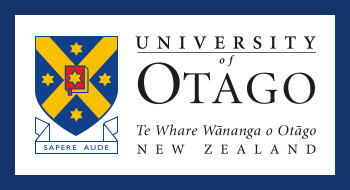
| Department of Mathematics and Statistics |
A Necessary Balance: Alec and Harry Aitken 1920-1935
P.C. Fenton
| << < | > >> |
17. J.T. Campbell
Aitken’s second graduate student, J.T. Campbell, the first of a string of New Zealanders drawn by Aitken’s reputation, arrived in late 1930. From New Zealand Campbell had written seeking advice on textbooks. Aitken replied:
I was very glad to hear from you, and also from Dr Merrington, of Knox College, of your intention to come and study mathematics at Edinburgh, and I am looking forward to meeting you. Of course I shall be delighted to advise you when you come about your course and to help you find lodgings and settle down in Edinburgh.
He dissuaded him from textbooks but wrote out some exercises in finite differences for Campbell to try as a warm-up, concluding
By small researches of this kind, not too serious or prolonged, you will have some preparation for general operations and for my lectures.
Campbell described this period in Edinburgh as one of the two formative mathematical experiences of his life (the other being the teaching of R.J.T. Bell at Otago). He was a conscientious student and the affectionate tone of Aitken’s letters suggests that they also hit it off on a personal level.
In the latter part of 1931 Aitken completed the long-matured Canonical Matrices with Turnbull. It was a success – all 285 copies sold in eight months128 – but the effort told. In February 1932 Aitken was complaining of ‘inflamed intestines’;129 colitis is hereafter a naggingly regular disturbance, linked by Aitken to stress. In a letter to Campbell on 1 April 1932, for example, ‘I am still shaky and badly off colour, hoping vainly for sunshine’. Eight days later, ‘Many thanks for your kind wishes. I am by no means out of the wood’, and on 13 June 1932, ‘I am very sorry I faded away at the end of your period of study [...] I am much better for the spell of sunshine’. These references are explained by a passage in the Memoir.
The work on the book, superimposed on other duties, brought on a recurrence of a trouble from which I had suffered in 1931, colitis. In June 1932 I had to hand over my lectures for the last fortnight of the session and take a holiday at Victoria Villa, St Abbs. There, the sea air and the change of surroundings cured the trouble, but the early days of June were full of depression.130
A similar crisis arose in June 1933. Apparently referring to the previous episode, Campbell wrote:
The family rented a house at St Abbs in the south of Scotland. On one occasion he was there recuperating from an illness and I was invited to join him. I can still see him walking up and down the living [room] playing his violin. This was a significant part of his recuperation.131
Campbell graduated PhD in June 1932. Aitken recorded132 that two other students ‘of some distinction and interest’ had come his way in 1932: Ragnar Nurkse, the economist, who easily accounts for distinction, and Margaret M. Robertson of 4 Hermitage Rd, Braids, whom I have been unable to trace. Florence Mary Harding,133 Aitken’s third PhD student, and after Campbell his second from New Zealand, evidently less startling than Nurkse or Robertson, arrived later that year.
| 128 | ACA to Pearl, 11 April 1933. |
| 129 | Campbell attributed its beginnings to a bout of dysentery suffered by Aitken during the war. Campbell to the author, 10 Sept 1991. |
| 130 | Memoir, 99. |
| 131 | 10 Sept 1991. See Memoir, 102, and letters Aitken to Campbell 27 Sept 1937, 29 March 1946. |
| 132 | Memoir, 100. |
| 133 | She was born in Waikouaiti, a small town outside Dunedin, in 1910, and educated at St Hilda’s Collegiate in Dunedin and the University Of Canterbury. She graduated MA in 1932. A Sir William Hartley Scholarship financed her study in Edinburgh. She eventually took up a lectureship at her alma mater, retired in 1973 and died in 1977. See Diane Farquhar and Lynn Mary-Rose, Women Sum It Up, Hazard Press (Christchurch, New Zealand) 1989. |
| << < | > >> |